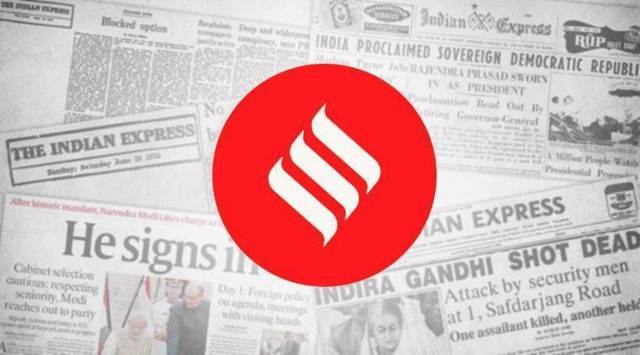- India
- International
Last child matters
ASER report flags burden of digital inequality on children, and opportunity for government schools.
 In the morning, when the Mahagathbandhan appeared toNaidu spoke of judicial “overreach” and disrespect of the “jurisdictional sanctity enshrined in the Constitution” and pointed to court interventions on matters ranging from fireworks on Diwali to denying the executive a role in the appointment of judges.
In the morning, when the Mahagathbandhan appeared toNaidu spoke of judicial “overreach” and disrespect of the “jurisdictional sanctity enshrined in the Constitution” and pointed to court interventions on matters ranging from fireworks on Diwali to denying the executive a role in the appointment of judges. The digital pivot in India’s schooling system risks pushing it into deeper inequality, seven months after schools shut down across the country to tackle the pandemic. A majority of children without access to internet has been thrown into distress — a handful to the point of self-harm, as several reports in this newspaper attest — by an exclusionary mode of learning. What reportage has indicated so far is confirmed by the Annual Status of Education Report (ASER) 2020, a phone survey of 60,000-odd students across rural India. Only about one-third of the surveyed children had access to online learning; only 11 per cent had access to live online classes. That the burden of digital inequality has fallen on children shows up in the data. As many as 24.3 per cent of the children said they had not received any learning material from the school in the week the survey was held because they had no smartphone — almost 75 per cent of interaction with schools was over WhatsApp.
Parents also appear to be acutely aware that the smartphone is the new English-medium education in the way it overlays and deepens age-old hierarchies. The survey reports that 11 per cent of parents bought a phone during the lockdown to prevent an interruption in their child’s learning. A surge in the use of smartphones (as compared to 2018) has not been accompanied by greater access, which itself shows that technological solutions on their own cannot be enough to address this unforeseen crisis. What schools — both private and public — have done well in is in reaching textbooks and worksheets to 80 per cent of students. The ASER report offers a snapshot of the churn in the education system, and also how inherited disadvantages continue to affect quality of learning. For instance, children with parents educated till Class X had a markedly better access to learning in these months than the children of parents with fewer years spent in school.
The report maps a crisis, but also holds out possibilities. For the private schools, it is a prod to rethink an online-only mode of learning. For government schools, the growth in footfall is an opportunity to improve the quality of teaching and retain students — it is possible, as has been shown by government schools in Karnataka and Kerala, among others, during lockdown. The experience of southern states in the past decades proves that investment in a public school system multiplies opportunities manifold. The AAP government in Delhi has shown that it makes for good politics. Till a vaccine is found, a resumption of classes is still a far way off. In the interim, all stakeholders have to come together to minimise both loss of learning and the emotional turmoil that comes from being left behind.
40 Years Ago
EXPRESS OPINION
Best of Express
Apr 18: Latest News
- 01
- 02
- 03
- 04
- 05
































